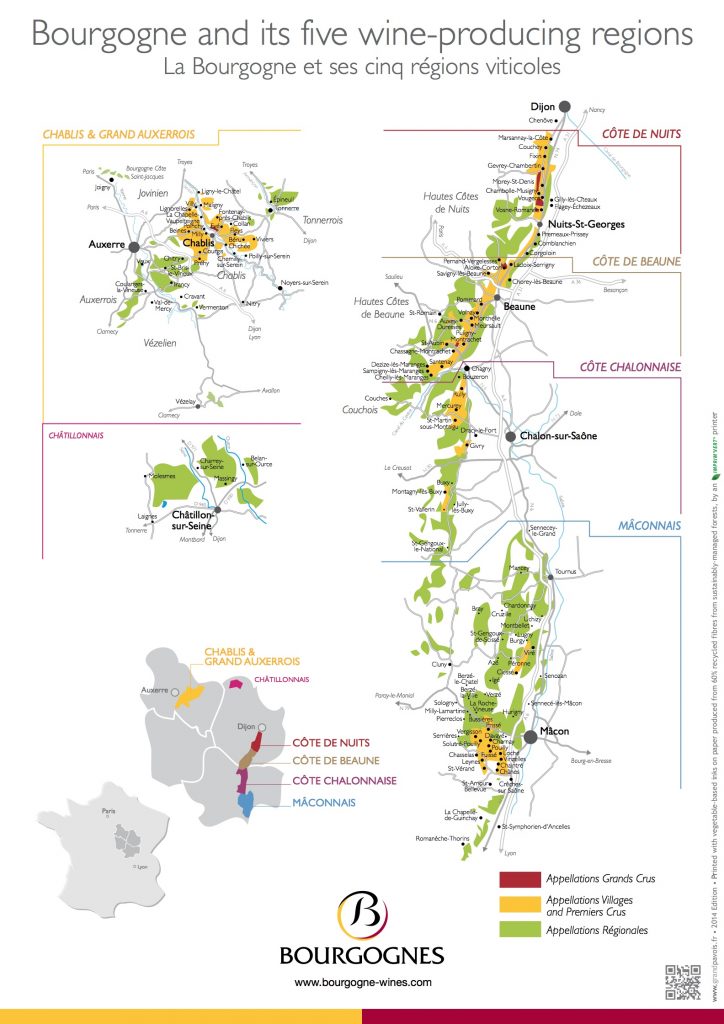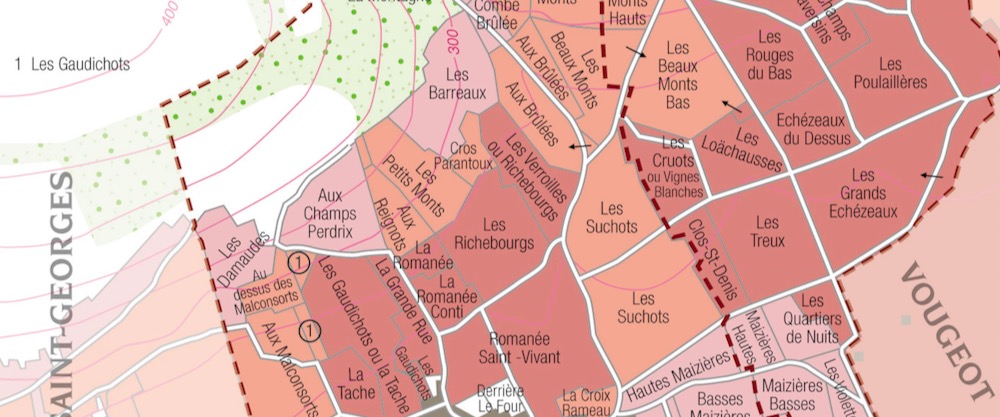Today our exploration of the sub-regions and villages of Burgundy takes us to Vosne-Romanée, home of Domaine de la Romanée Conti, and Clos-Vougeot, the single biggest Grand Cru in Burgundy. It’s about as close as you can come to visiting them.
In this series, we’ve cover Chassagne-Montrachet, Pugliny-Montrachet, Saint Aubin, Mersault, Pommard, Nuits-Saint-Georges, Vosne-Romanée, Clos-Vougeot, Chambolle-Musigny, Morey-Saint-Denis, Gevrey-Chambertin and Chablis.
Make sure you join our community to get the latest articles from the Wine Bites Mag as they come out. You’ll find all of our Burgundy related articles here.
There’s a quick refresher on the regions of Burgundy at the end of this post to help you place yourself within Burgundy and France as a whole.
See all of our wines from Vosne-Romanée
The Villages of Vosne-Romanée & Clos-Vougeot
Vosne-Romanée
“Bourgogne has produced nothing better than this little corner where all her charms come together”. So wrote Gaston Roupnel Burgundian author, celebrated historian of the French countryside. This “central pearl in Bourgogne’s necklace” harbours fabled Grands Crus: ROMANÉE-CONTI, ROMANÉE SAINTVIVANT, LA ROMANÉE, LA TÂCHE, LA GRANDE RUE, RICHEBOURG, and, in the neighbouring commune of FLAGEY-ÉCHEZEAUX, ÉCHEZEAUX and GRANDS ÉCHEZEAUX. Close to this paradise, the appellation Village VOSNEROMANÉE and its Premiers Crus express the Pinot Noir grape at its heavenly best.
Appellation Village of the Côte de Nuits region (Côte-d’Or).
Vosne-Romanée resides in the Côte de Nuits and includes 14 Premiers Crus Climats.
The commune of Vosne-Romanée produces 6 Grands Crus and the commune of Flagey-Échezeaux 2 Grands Crus.
On the label, the appellation VOSNE-ROMANÉE and VOSNE-ROMANÉE PREMIER CRU may be followed by the name of the Climat of origin.
Area under production 150.54 ha (including 54.24 ha Premier Cru) in 2018.
Explore Vosne-Romanée through a harvest at Domaine de la Romanée-Conti (in French).
Vosne-Romanée with Anne Gros
Clos-Vougeot
At just over 50ha, with 80 owners, Clos-Vougeot is the single largest Grand Cru in the Côte de Nuits.
The northwest corner is neighboured by the Grand Cru’s Échezeaux, Grands-Échezeau, and, Musginy.
As you’d expect with a vineyard of this size, there are sections that produce superior wine to others, and, Domaines on top of their game, and, those making less exciting vino.
Exploring the Clos-Vougeot with François Labet, owner of Château de la Tour in Vougeot
Detailed Maps of Vosne-Romanée & Clos-Vougeot
Click to enlarge
The Regions of Burgundy
The best bit of Burgundy is a thin strip running from North to South around 50km in length, to the South East of Paris
It’s split into three main regions, within each of these regions there are villages which have specific single vineyards planted in them to the varieties red varieties: Pinot Noir and Gamay, and the white varieties: Chardonnay and Aligoté, a lesser variety that produces some fun wines at more affordable prices.
The three main regions in the strip South of Dijon are:
- Côte D’Or – meaning the Golden Slope, derived from it’s original name, Côte d’Orient, East Slope, within which rest:
- Côte-de-Nuits – South of the city of Dijon and North of the town of Beaune famous for it’s Pinot Noir. The best known villages are: Gevrey-Chambertin, Morey-St-Denis, Chambolle-Musigny, Nuits-St-Georges and Vosne-Romanée. 5% of Burgundy production including Chablis.
- Côte-du-Beaune – The area around and South of Beaune famous for Chardonnay including the 5 Grand Cru vineyards and many very good Pinot producing vineyards. The best known villages are: Puligny-Montrachet, Chassagne-Montrachet, Mersault, Volnay, Pommard and Saint Aubin. 10% of production including Chablis.
- Côte-Chalonaise – Mixing more affordable Chardonnay and Pinot that can be of excellent quality. The villages of Rully, Mercurey and Givry producing their best wines.
- Mâconnaise – The least regarded of the main regions, still capable of producing some very good wines. Becoming a shining light for value with the ever increasing prices of Burgundy.
In addition to these, the two regions of Beaujolais, mostly producing Gamay, (at the South end of the Dijon Strip) and Chablis, mostly producing Chardonnay (between the southern part of Champagne and Dijon) are part of the Bourgogne wine region.




You must be logged in to post a comment.